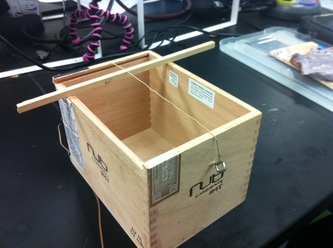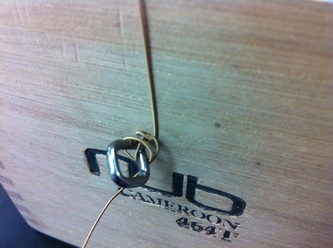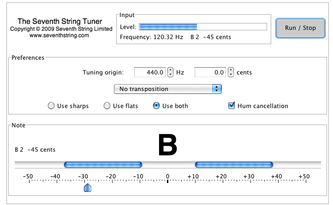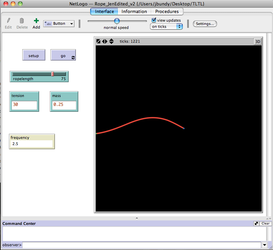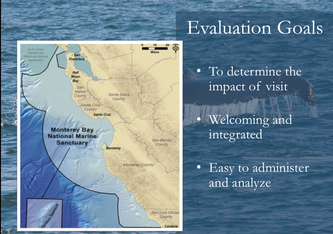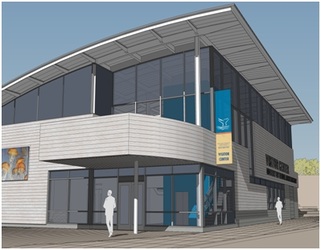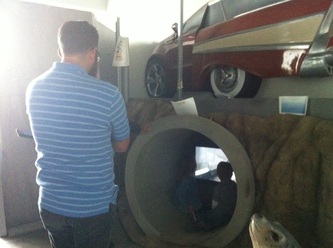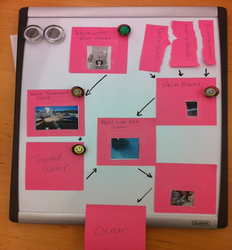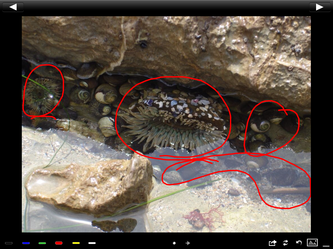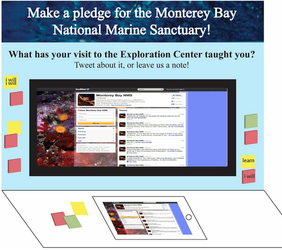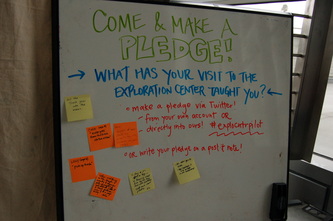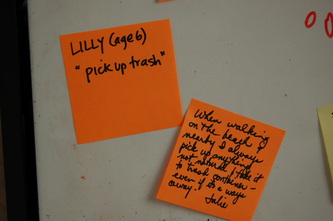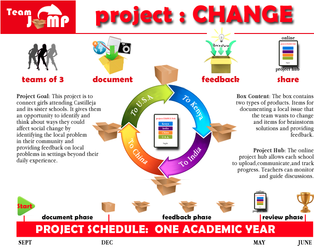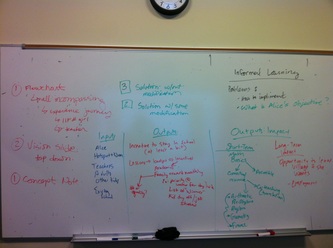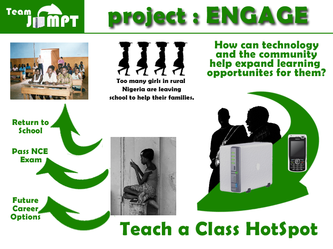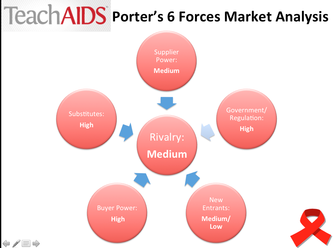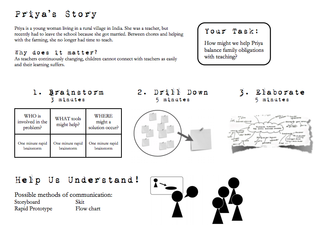Bifocal Model: Exploring Pitch
Fall 2011
|
I worked on developing a bifocal model for the Transformative Learning Technologies Lab that explores the relationship between pitch, string length and frequency. With the resulting prototype, students manipulated a "sound box" to play a pitch. Using an online tuner, they record the frequency of that pitch. The NetLogo model is then used to have students discover the mathematical relationship between the frequency of the pitch and the string length.
|
Project: Collaborative Reading
Fall 2011
|
Team members:
Juan Alperin, Sarah Chou and Liu Laura He In this project for the Social Media and Virtual Communities course, our team analyzed the affordances and challenges of using online annotations to discuss readings. We used Diigo as the primary tool of annotation and produced reflections, both in text and video form, as we went through six weeks of readings. The Diigo annotations can be found here. |
|
Qualitative Study: Fostering Creativity in Museums
Fall 2011
|
Team members: Felipe Baytelman and Mehjabeen Datoo
For Introduction to Qualitative Methods, we completed a mini-research study. The process entailed a site observation and two interviews with a staff member. Our team focused on a local children's museum. The resulting paper explores how the museum seeks to teach and foster creativity through various interactions with children, parents and the community. |
|
Quantitative Study: The Haptic Tactic
Fall 2011
|
This quantitative study for Topics in Cognition and Learning: Visualization investigated the effects of touching live animals on learning. There is currently debate regarding if the benefits of handling animals outweigh the consequences to the animal’s health and safety. To investigate if handling animals has an impact, subjects will interact with two animals, one through touch and the other through observation only. The results suggest that the types of content retained differed depending on if the subject touched the animal or not, but over time that difference disappears. The emotional component to interacting with animals may also have long-term impacts that could be leveraged by educational institutions.
|
|
Research Paper: Science Learning in Informal Spaces
Fall 2011
|
In this paper for Language, Identity and Classroom Learning, I explored how informal learning institutions, such as science centers, museums, zoos and aquariums, can impact science learning and identity through the integration of scientific discourse with the local community culture. |
|
Project: Pirate Physics
Winter 2012
Team Members:
Christine Chow, Katie McFeely and Lyn Lyn Tang
For Child Development and New Technologies, our team chose to design an app that helps children learn about the uses of simple machines. Through user testing and prototyping, we decided to focus on a pirate theme. As detailed in the final report, design decisions were also rooted in child development literature and research.
Christine Chow, Katie McFeely and Lyn Lyn Tang
For Child Development and New Technologies, our team chose to design an app that helps children learn about the uses of simple machines. Through user testing and prototyping, we decided to focus on a pirate theme. As detailed in the final report, design decisions were also rooted in child development literature and research.
| pirate_physics.pdf | |
| File Size: | 30352 kb |
| File Type: | |
Project: Core Mechanics for Learning
Winter 2012
Team Members: Stephanie Chang, Katie McFeely and Heidi Williamson
Our team created descriptions and content for six potential core mechanics of learning: affirmation, contrasting cases, feedback, modeling, question asking and reflection. Affirmation and Contrasting Cases are presented as print book entries. Feedback, Modeling, Question Asking and Reflection are presented in the format of an interactive website. The primary audience was elementary school science teachers.
Our team created descriptions and content for six potential core mechanics of learning: affirmation, contrasting cases, feedback, modeling, question asking and reflection. Affirmation and Contrasting Cases are presented as print book entries. Feedback, Modeling, Question Asking and Reflection are presented in the format of an interactive website. The primary audience was elementary school science teachers.
|
|
|
Research Paper: Barriers to Access
Winter 2012
|
In this paper for Science and Environmental Education in Informal Environments, I explore the underlying structures of science centers and museums that may negatively affect the feeling of inclusion by minority groups.
In addition to researching these issues within academic literature, I studied interactions and programs at two different institutions. Although both institutions make efforts to be culturally sensitive and inclusive of the diverse audiences they serve, I conclude that some assumptions about first-time museum visitors in general might be better addressed. |
|
Project: MBNMS Exploration Center Evaluation Plan
Spring 2012
|
Team Members: Stephanie Chang and Lisa Peterson
Our team for the Theory and Practice of Environmental Education course worked to develop an evaluation plan for a new Exploration Center in Santa Cruz that serves as a welcome center to the Monterey Bay National Marine Sanctuary. Our plan centered on the use of "embedded assessments" that integrate with the hands-on activities the Exploration Center had developed. Each assessment was designed to determine the impact of the visit and be easy for staff and volunteers to administer and analyze. The evaluation plan consisted of three elements: 1) Watersheds Content Assessment: Guests create a flow chart of where runoff from different sources ends up. The facilitator looks for specific links. 2) Biodiversity Content Assessment: Guests are asked to circle, on an iPad, animals that they recognize in three pictures of the rocky intertidal. The facilitator checks off animals that are identified and takes a screen shot of the circled image for later reference. 3) Pledge Board: At the end of the exhibits, guests can post, either through Twitter or on the physical board, what their visit to the Exploration Center has taught them. The staff can analyze how many of the responses are content-based versus action-based.
| |||||||
Projects: Imagining the Future of Learning
Spring 2012
|
Team Members: Tara Adiseshan and Meredith Bates
Over the course of the quarter, our interdisciplinary team explored three design challenges related to education for 11-year-old girls around the world. Project Change connects girls from around the world and gets them involved in thinking about ways they can create social change. Girls from the United States, Kenya, India and China provide each other possible solutions for a local problem each team identifies from their community. Project Engage is a community effort that integrates Khan Academy and other similar programs into both the school curriculum and everyday life for the target learners through the Teach-A-Class Edu Hotspot. For TeachAIDS, we provided a market analysis using Porter's Six Forces as a model. The final project was the facilitation of a design thinking workshop centered around the problem of female teacher retention in rural India. |

